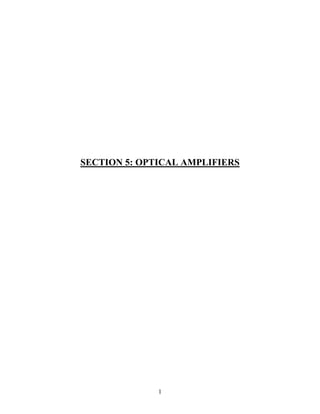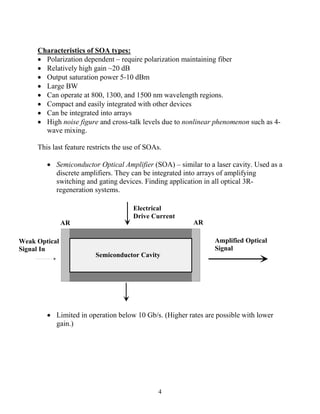Optical amplifiers are used to compensate for attenuation losses in optical fibers over long transmission distances. The three main types of optical amplifiers are semiconductor optical amplifiers, fiber Raman amplifiers, and rare earth doped fiber amplifiers. Rare earth doped fiber amplifiers like erbium doped fiber amplifiers are particularly useful as they can provide wide bandwidth amplification in the 1.5 micron wavelength region with high efficiency. They have advantages such as high power transfer efficiency, wide gain bandwidth, and polarization independence. However, they also produce amplified spontaneous emission noise and have saturation effects at high powers.











![The amplification factor after a length L of OAM (optical amplifier medium) is
G (w ) = exp[g (w ) L]
Both g(w) and G(w) are a maximum when the frequency is at resonance w = w o
and decrease when the frequency is detuned from resonance.
However the amplifier factor(G) decreases much faster than the gain coefficient(g).
· The amplifier BW DnA is defined as the FWHM of G(w)
0.5
æ ln 2 ö
ç ln(G / 2) ÷
Dn A = Dn g ç ÷
è o ø
where Dng is the gain BW, and Go = exp(goL).
· The amplifier BW is smaller than the gain BW. The difference depends on the
amplifier gain characteristics.
If Go = 10, Dn A = 0.656 Dn g
12](https://image.slidesharecdn.com/opamp1-120206014900-phpapp01/85/Opamp1-12-320.jpg)











